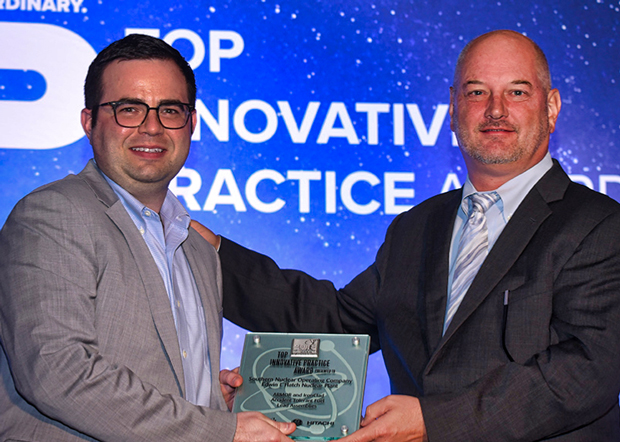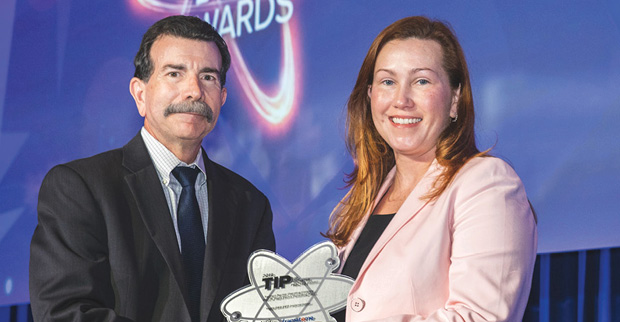Southern Nuclear models high emergency preparedness standards for the nuclear industry
<p>September is emergency preparedness month, but when it comes to nuclear safety, preparing for emergencies is a year-round affair. For four decades now, Southern Company has managed the industry’s Pooled Inventory Management (PIM) program, a collaboration by the entire nuclear power industry that stores and maintains critical spares that require long lead times.</p>
<p>The equipment stored in the PIM program is warehoused in Memphis, Tennessee, and includes critical plant spares for the purpose of getting plants back up and running in the event of an equipment failure. The program was started in 1980 under the management of General Electric. Southern Company took over managing the program in 1984. “Southern Company has carried that responsibility ever since,” said Mark Boggs, PIM supply chain manager.</p>
<p>Following the Fukushima Daiichi nuclear accident in March 2011, the Nuclear Regulatory Commission (NRC) required nuclear power facilities to make significant enhancements to maintain key plant safety functions following a large-scale natural disaster. In response, the U.S. nuclear industry developed a diverse and flexible strategy called FLEX. The strategy ensures that U.S. nuclear sites are prepared for catastrophic events such as seismic events, hurricanes, floods, tidal waves or volcanic activity that could exceed what are already robust plant design parameters. FLEX is a three-phase approach for mitigating unusual external events to maintain or restore core cooling, containment integrity and spent fuel pool cooling functions.</p>
<p><img width="225" style="float: right; margin: 0 0 10.0px 10.0px;" src="https://southerncompany.com/content/dam/southern-company/images/southern-nuclear/NewsStories/pim_safer-200930-img1.jpg">The PIM program was selected by the industry to form the Strategic Alliance for FLEX Emergency Response (SAFER) program and establish two National SAFER Response Centers (NSRC) located in Memphis, Tennessee, and Phoenix, Arizona. The SAFER program fulfills the FLEX phase III requirements by providing off-site emergency equipment by land or air to any U.S. site within 24 hours.</p>
<p>“The industry chose PIM for the SAFER effort, because the program was already set up to maintain equipment for the nuclear industry. There was a contract and accounting structure in place with the industry to allow for the sharing of costs between industry members for purchasing, storing and maintaining equipment and a track record with delivering equipment within 24 hours. Any time there was a need for a piece of equipment in storage, we never had a problem fulfilling our mission of getting it to the requesting site. We built on that history with PIM, so to the industry, it just made sense to use the experience for this additional program,” said Boggs.</p>
<p>“Each NSRC has equipment to simultaneously handle an emergency at two nuclear power plants, or four reactors” he added. “The equipment in each NSRC is redundant to the other, and if one NSRC is unable to deploy, the other NSRC is available to support the distressed plant.”</p>
<h3><b>People Readiness</b></h3>
<p>Other companies are involved with SAFER, to ensure an adequate labor force and for management of the program. “We partnered with Framatome,” Boggs said. “We used their engineering expertise and technician labor force which deploys with the equipment.”</p>
<p>Drills are held quarterly to ensure the workforce is trained and ready. “There are two SAFER Control Centers, one in Lynchburg, Virginia, where Framatome is located, and one at the Energy Center in Birmingham. We train quarterly between the two locations and the two National SAFER Response Centers. Once a year, the field technicians who would be deployed to the distressed site come to Memphis to be trained on every piece of equipment, using a combination of hands-on and classroom training,” he explained. Although all the field technicians are Framatome employees, the PIM group, run by Southern Nuclear, staffs the Birmingham SAFER control center and maintains the equipment at the two National SAFER Response Centers.</p>
<h3><b>Equipment Readiness</b></h3>
<p>In addition to ensuring a workforce is capable to effectively respond to an emergency, special attention must also be given to over 200 pieces of emergency equipment stored within the response centers.</p>
<p>There are challenges in managing the PIM/SAFER centers: maintaining the equipment to be ready for use at a moment’s notice, monitoring temperature and humidity to ensure the equipment doesn’t rust, protecting equipment seals from deterioration and ensuring batteries are charged so the SAFER equipment is kept in a state of readiness. There are also financial implications to consider as each center contains more than $27 million dollars of equipment, a significant investment for the industry that must be protected.</p>
<p>PIM has partnered with the company Foresight to develop remote monitoring of temperature, humidity, and battery condition (charge), saving hours of manual labor and alleviating 1,542 maintenance work orders per year.</p>
<p><img width="225" style="float: right; margin: 0 0 10.0px 10.0px;" src="https://southerncompany.com/content/dam/southern-company/images/southern-nuclear/NewsStories/pim_safer-200930-img2.jpg">Critical spares in the PIM program are stored in sealed vinyl bags, or tents, which provide for humidity control using inert gas or desiccant. Humidity in these bags had to be manually monitored every month to ensure humidity levels were below required thresholds. “That was our most people intensive effort prior to the monitors,” said Boggs. “We have over 200 components, (large motors, reactor components and emergency diesel generators) in bags with desiccant or inert gas to keep humidity down. Every month we had to inspect and document them manually. We needed a way to reduce that burden.”</p>
<p>Foresight has provided wireless temperature and humidity sensors for each of the bags or tents. “We are monitoring the humidity levels inside each enclosure in real time. Reports are generated daily for all the equipment, unless there’s an alert. In the event of an alert condition, we are notified immediately via text or email,” said Chip Staples, Foresight’s chief operating officer.</p>
<div style="width: 225.0px; float: right; margin: 0 0 0 10.0px;"><img width="225" style="margin: 0 0 10.0px 0.0px;" src="https://southerncompany.com/content/dam/southern-company/images/southern-nuclear/NewsStories/pim_safer-200930-img3.jpg"></div>
<p>Also, for the SAFER equipment, batteries must remain in a state of readiness for a possible deployment. Battery inspections were previously performed during quarterly preventative maintenance. Foresight has developed remote monitors for a wireless battery management program. “There are approximately 500 batteries that power all this emergency response equipment in the event of a nuclear emergency in the U.S. Previously, PIM was relying on monthly or quarterly manual voltage readings of all these batteries to determine if they were holding a charge and ready for use. We have now installed wireless voltage monitoring sensors, and if a battery falls below a predefined voltage threshold, we get an immediate alert. It’s another safety measure to keep the equipment in a state of readiness,” said Staples.</p>
<p>Boggs further emphasized that “Up until then, we didn’t know until we tested them during quarterly maintenance whether they needed charging or replacement. The remote monitoring gives us live input.”</p>
<p>Foresight and PIM/SAFER continue to discuss other ways to monitor equipment. Running an operation of the size and importance of the PIM and SAFER programs is a massive responsibility, but Southern Nuclear has proven to be a reliable and effective manager, doing their part to keep the nuclear industry prepared for an emergency.</p>

